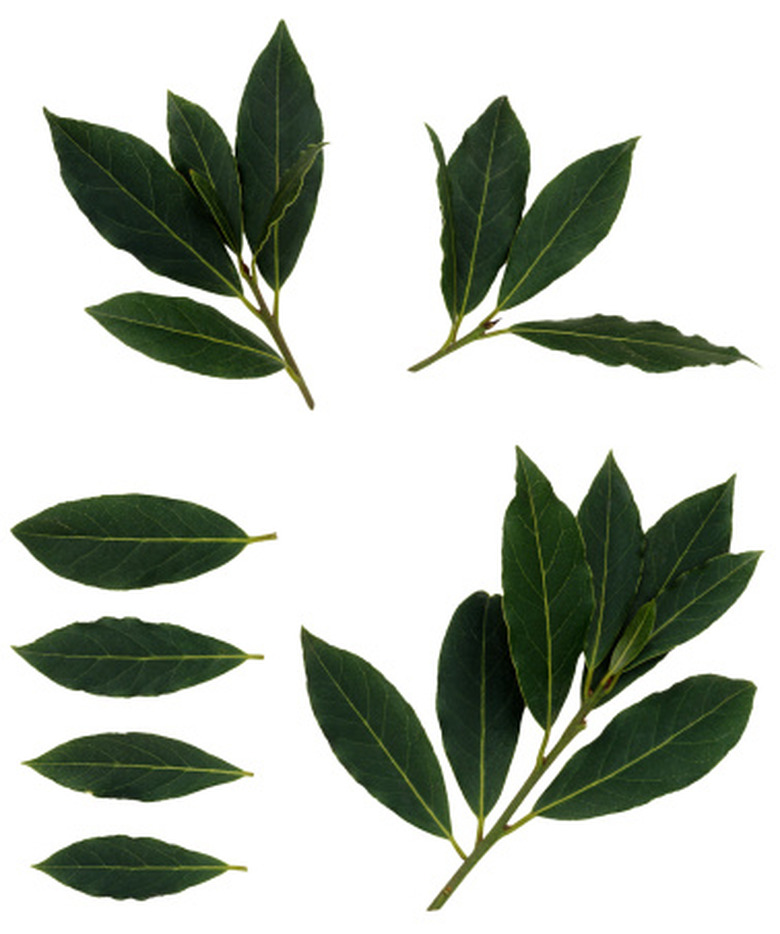How To Propagate A Bay Tree
Things Needed
- Garden clippers
- Heating mat or hot compost
- Rooting medium
- Small pot
- Rooting hormone powder
The bay tree (Laurus nobilis) is a large, attractive evergreen tree that produces the culinary leaves known and loved by cooks everywhere for the richness it adds to soups and other creations. While you can keep your bay tree potted in a container, it is far less likely to produce its fluffy white blooms. Potted bays are often cut into topiary shapes. While you can grow bay from seeds, you are likely to be more successful using other methods of propagation.
Step 1
The easiest method of propagation if you have a tree that has a lot of basal suckers is to dig the sucker growth with some roots attached and transfer it to grow separately in a pot until large enough to plant. The ideal time to do this is in the spring when growth is strong.
Step 2
If there are no rooted suckers to take advantage of, the next best form of propagation of the bay is to take cuttings. It is not the easiest tree to grow from cuttings, so take a number of them to be sure you have enough to serve your needs.
- The bay tree (Laurus nobilis) is a large, attractive evergreen tree that produces the culinary leaves known and loved by cooks everywhere for the richness it adds to soups and other creations.
- If there are no rooted suckers to take advantage of, the next best form of propagation of the bay is to take cuttings.
Step 3
Bay cuttings will fare best with bottom heat. If you have a heating mat, you will be able to control heat the best. For purists who have the set-up for it, you can use hot compost under the pots or rooting trays.
Step 4
Bay is susceptible to fungus and rot, which makes it a bit more tricky since your rooting medium — sterilized potting or seed soil, or a mixture of perlite and sand — should not be allowed to dry out. Rooting hormone powder should help, as it not only encourages the formation of roots, but has a fungicide mixed in. Dip your cutting in the hormone powder and press the end of the cutting into your moistened medium.
Step 5
With bottom heat and high humidity, your cuttings should start to root in 30 to 90 days in temperatures ideally in the 70-degree-Fahrenheit range. They can, however, take up to a year, so if they are still green, don't give up on them.
- Bay cuttings will fare best with bottom heat.
- Bay is susceptible to fungus and rot, which makes it a bit more tricky since your rooting medium — sterilized potting or seed soil, or a mixture of perlite and sand — should not be allowed to dry out.
Step 6
When you see your cutting actively putting out new growth, you will likely have some good roots started. Wait until the plant has grown a few new leaves before planting in a larger container. Although your tree will grow reasonably fast at this young age, it may take a year or two before it is ready to go into the ground.
Tip
If you do not want to use rooting hormone powder, you can try using a tea made of dried willow leaves and watering with it. It is not fungicidal, but it will encourage rooting.
